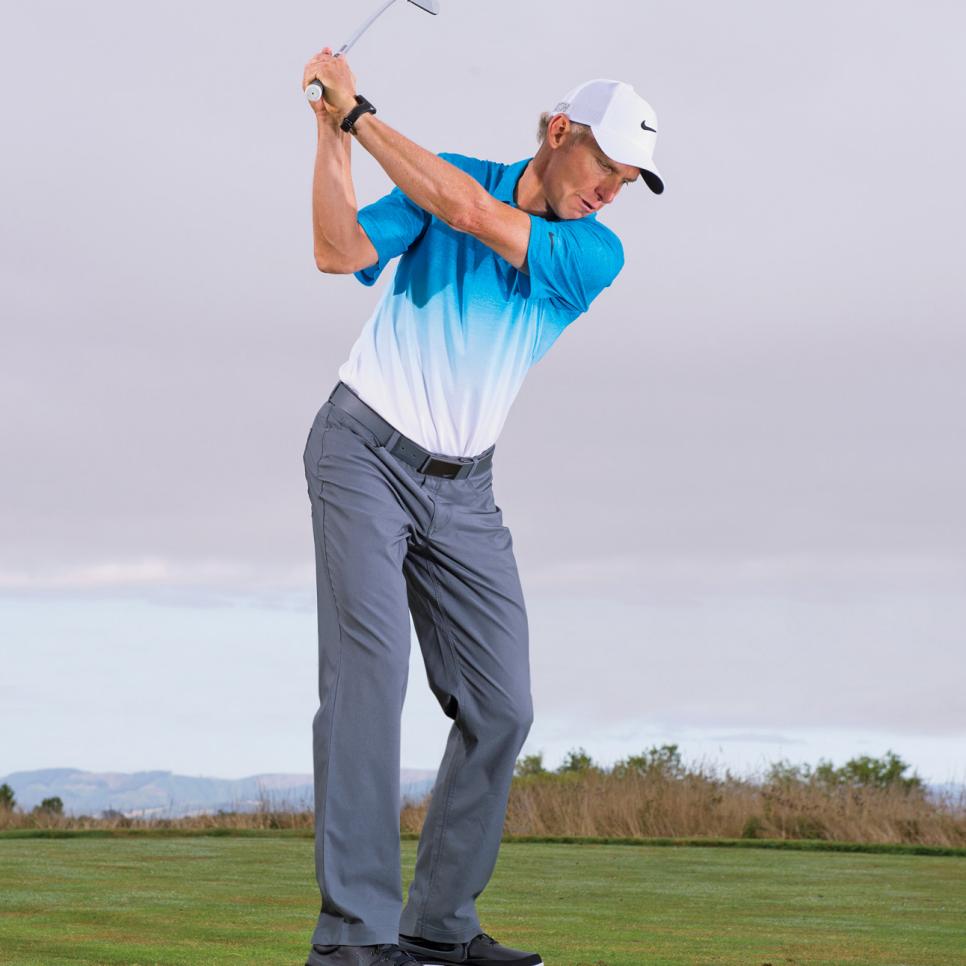Instruction
Rip It And Chip It

Consider this: Golfers with great long games tend to be weaker around the greens, and those with terrific short games often struggle with ball-striking. Why? Because a full swing and a chip or pitch are fundamentally opposite motions, yet many of us approach them the same way. The fix begins with understanding "kinematic sequence." Simply put, the sequence of motion for a short-game shot should be the reverse of a full swing. On big swings, the lower body leads the downswing; in the short game, the clubhead initiates the first move to the ball. Here's what you need to know to get good at both.
FULL SWING
In most athletic motions, energy courses through the body like a whip. Say you're throwing a punch. You plant your lead foot and your body weight sinks into that thigh. Next, your hips start to rotate open. As your hip rotation slows, your torso rotates faster. As your torso slows, the power travels to your arm, then your hand and, ultimately, your poor victim's nose. This acceleration and then deceleration of each body part is called the kinematic sequence.
The golf swing is a classic example. The lower body begins the downswing (above). Your energy then moves to the torso, then the arms, with the force multiplying along the way until it's unleashed at the tip of the whip, the clubhead.
Too much information, right? The beauty is, because this whipping action happens faster than we can consciously control, all you need to do is nail the first move to set it in motion. With any full swing, start the downswing by imagining you're squashing a spider with your lead foot. That image will get things going.
If you're a slicer, you probably start down with your upper body. A drill to correct that is to take a middle iron and hit full-speed shots stopping right after impact. This cut-off finish will train your body to release its speed at the ball.

SHORT GAME
Here's a scene from the short-game area: A golfer toils away on short pitches, chunking or blading every other ball. His phone rings, and as he holds it and casually swings the club with just his right hand—presto!—he starts hitting it pure.
A one-arm swing with the dominant hand induces proper short-game action. And the sequence of motion is nearly the opposite of a full swing: The clubhead drops to initiate the downswing, and the energy flows to the hands, the arms, the torso and finally to the lower body. Swinging one-handed, it's almost impossible to start down with anything but the clubhead.
How close to the green should you be to reverse your sequence? It's more about the contact you want to make. On pitches and chips, the trailing edge of the clubhead strikes the turf first, slightly behind the ball. This lets the bounce (the wide bottom of a wedge) slide through and get a clean, soft strike. On full shots, with the lower body leveraging, it's ball-first contact, with the leading edge ripping a divot.
Hitting one-handed isn't easy, so start without a ball. Rest your left fist on your chest to get it out of the way (above). At first, just try to scuff the grass. You'll quickly feel how the sequence differs from the full swing. With Max Adler
Christopher Smith is the PGA lead instructor at Pumpkin Ridge Golf Club outside Portland, Oregon.